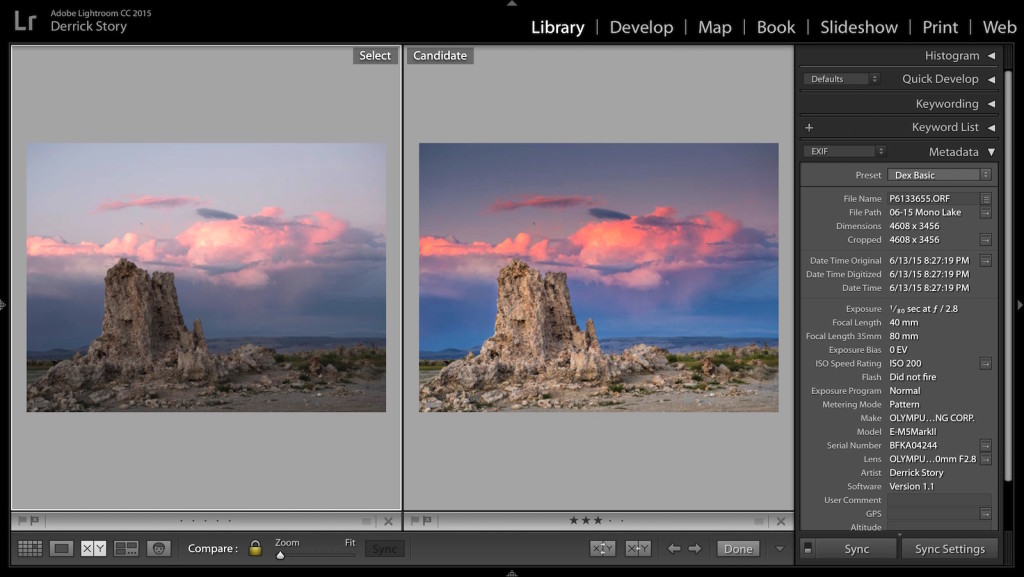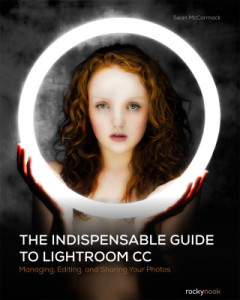In the End, We All Want Great Images June 23, 2015 – Posted in: Photography – Tags: Lightroom, post production
One of my favorite Ansel Adams quotes is: “The negative is the equivalent of the composer’s score, and the print the performance.” This acknowledgement that a complete photograph is the result of two distinct activities, capture and processing, has helped me refine my own craft.
What was true in Adams’ chemical darkroom remains so today on the computer. In fact, the very name Lightroom acknowledges traditional photographic processing.
When I press the shutter button, I have a pretty good idea of what will appear on the camera’s 3″ LCD, and what the final image will look like after processing in Lightroom. I don’t use the Zone System, per se, but I know the range of tones that I’m after so I can maximize the image’s impact later.
Take a look at the two renderings of this photo from Mono Lake. I knew when I captured the image that neither the sky nor the Tufa would look exactly the way I wanted, at least at first. My thoughts at the moment centered around composition and exposure. Frame the shot well, record as much image data as possible, and pay attention to detail. Because of the quality capture, I was able to complete the image in Lightroom CC after just a few adjustments.
There are many schools of thoughts on this process. Some feel that the image should be captured perfectly in-camera with no further work. Others are fine with sloppy capture technique and employ lots of post production magic. I’m in the middle. My technical heros were W. Eugene Smith and Ansel Adams. Both embraced the complete process with attention to detail at all phases.
Regardless of where your sensibilities are, one of the best post production tools we have today is Adobe Photoshop Lightroom. It provides a workshop for organizing, editing, and outputting our work. You can use just a few tools, or everything that’s available in the Develop module.
Rocky Nook has just published The Indispensable Guide to Lightroom CC by Sean McCormack. In this book, Sean focuses on the fundamentals of Lightroom CC, using a hands-on learning style to carefully walk you through Lightroom’s features, including file management, image editing, slideshows, printing, sharing, and more.
If it’s time to improve your “performance,” as Adams would say, then let Sean be your teacher. Because in the end we all want the same thing: great images.
Derrick Story is the photography evangelist for Rocky Nook Publishing.



